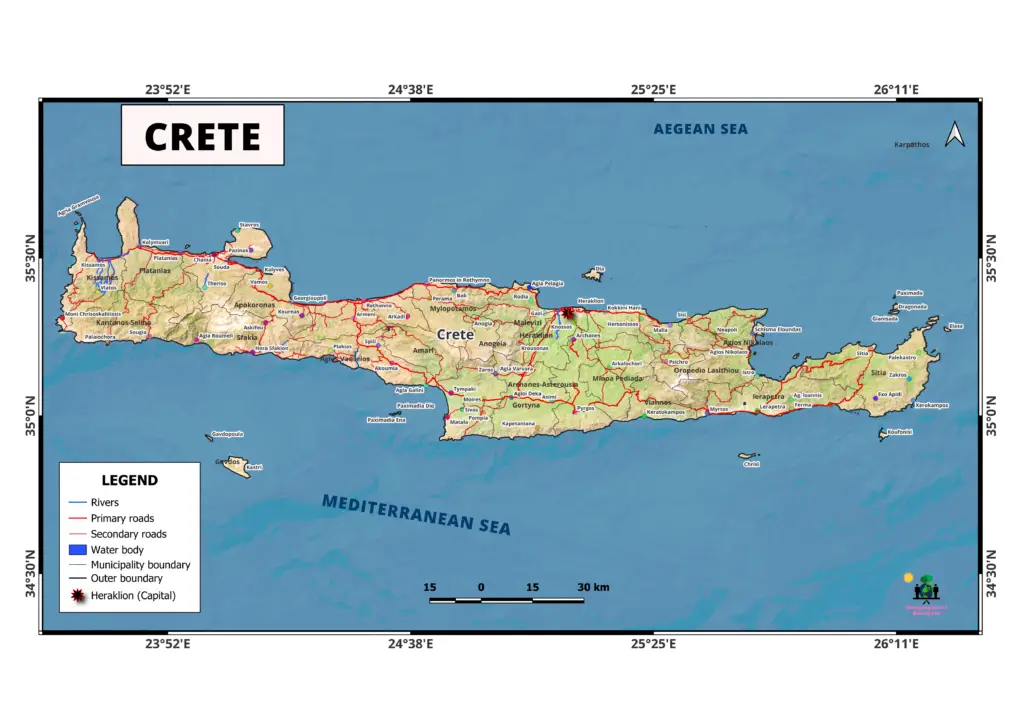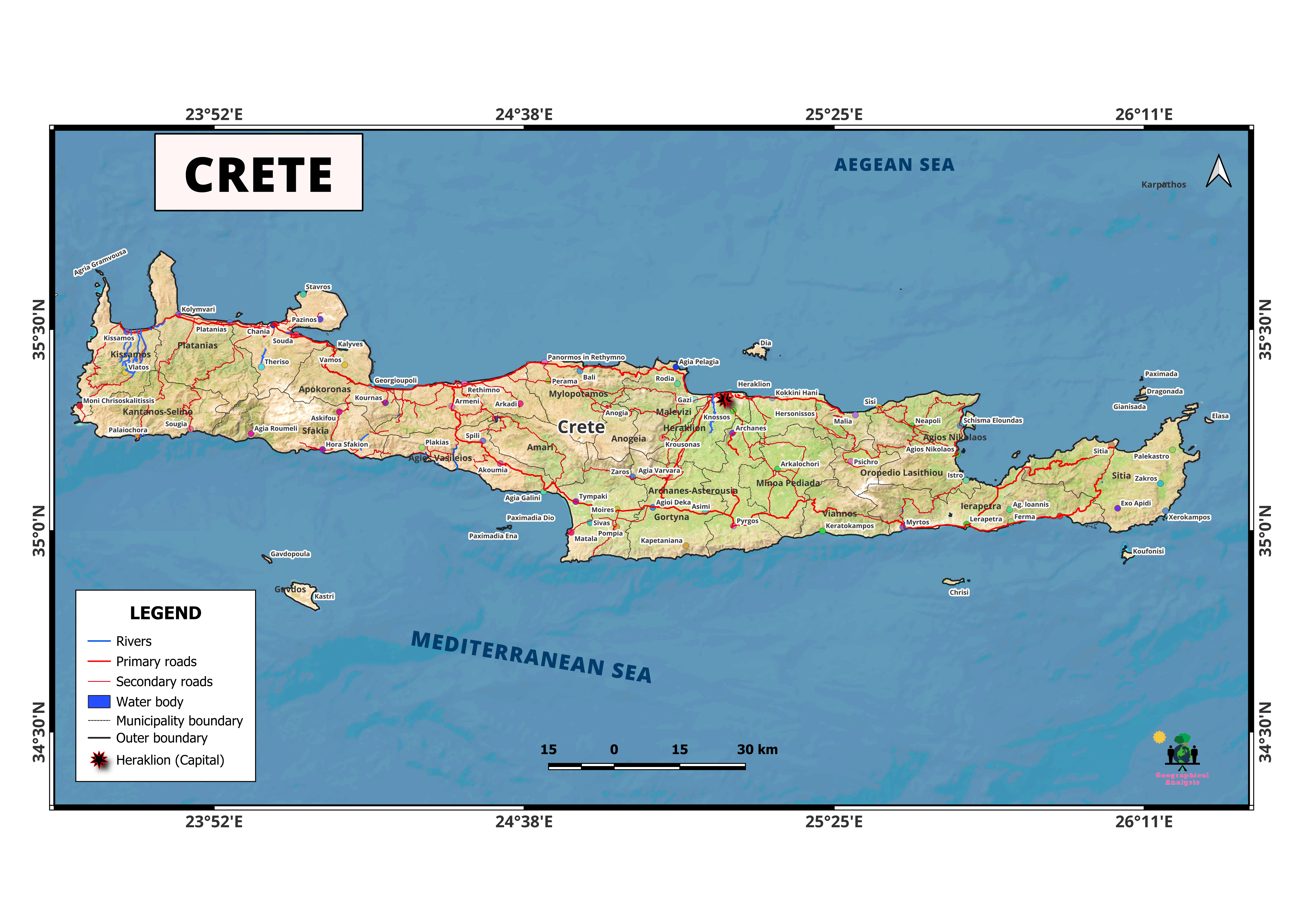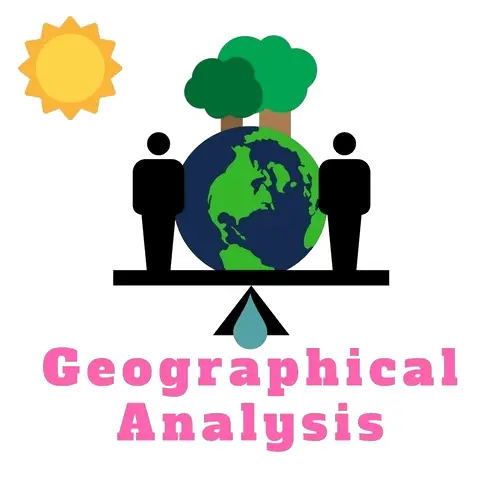A detailed map of Crete is available here. You can download this map for free for educational purposes. Both jpg and pdf versions are available. Download it and use it easily.
Download map of Crete (jpg)

Download map of Crete (pdf)
The largest and most populated Greek island is Crete, which is situated in the eastern Mediterranean Sea. It is of great historical and cultural significance and is frequently referred to as the birthplace of European civilization because of its ancient Minoan civilization. Here are a few crucial details regarding Crete:
Geography:
Geographically speaking, the Sea of Crete separates Crete from the Greek mainland in the south. It’s renowned for its varied topography, which includes mountain ranges like the White Mountains and the Idi Range, as well as lovely beaches and productive plains.
History:
From roughly 2700 to 1450 BCE, the Minoan civilization, one of the earliest highly developed civilizations in Europe, thrived on the island of Crete. Insights regarding their complex society can be found in the ruins of the ancient palace of Knossos. Additional civilizations that have affected Crete include the Mycenaeans, Romans, Byzantines, Venetians, and Ottomans.
Culture:
Crete is home to a diverse range of customary music, dance, and foods, as well as its own dialect. Fresh ingredients, olive oil, and regional herbs are frequently used in Cretan cooking. A bowed string instrument called the lyra is frequently used in traditional music.
Travel:
Due to its breathtaking natural beauty, ancient sites, and pleasant climate, Crete is a well-liked tourist destination. Travelers come to see the ancient ruins, unwind on the beaches, go hiking in the highlands, and take in the vibrant local culture.
Economy:
Crete’s economy is mostly based on agriculture, with the production of olive oil playing a considerable role. Both tourism and services have a significant impact on the island’s economic activity.
Landmarks:
In addition to the Palace of Knossos, Crete is home to numerous significant historical sites, including the Arkadi Monastery, the Phaistos and Gortyna Archaeological Sites, and the Samaria Gorge, a well-known trekking location.
Language:
With particular linguistic characteristics and historical influences from the island, the Cretan dialect is a distinctive variety of the Greek language.
Mythology:
Greek mythology is frequently associated with Crete because it was thought to be the birthplace of Zeus, the ruler of the gods. Cretan folklore also serves as the foundation for the tale of the Minotaur and the Labyrinth, which is linked to King Minos of Knossos.
Local customs:
Throughout the year, a number of festivals and celebrations are conducted locally that highlight Cretan music, dancing, and handicrafts.
Crete is a fascinating location with a distinctive identity in the Mediterranean region because of its combination of ancient history, stunning natural scenery, and dynamic culture.
N.B. Maps are shared only for educational purposes.
For custom map making services, contact with us at : admin@geographicalanalysis.com



